Using Micro-Conversions to Kickstart Adventure Travel
Using Micro-Conversions to Kickstart Adventure Travel
TourRadar & WeDiscover
The beginning
TourRadar, an adventure booking platform for global organised adventures, partnered with WeDiscover in June 2021.
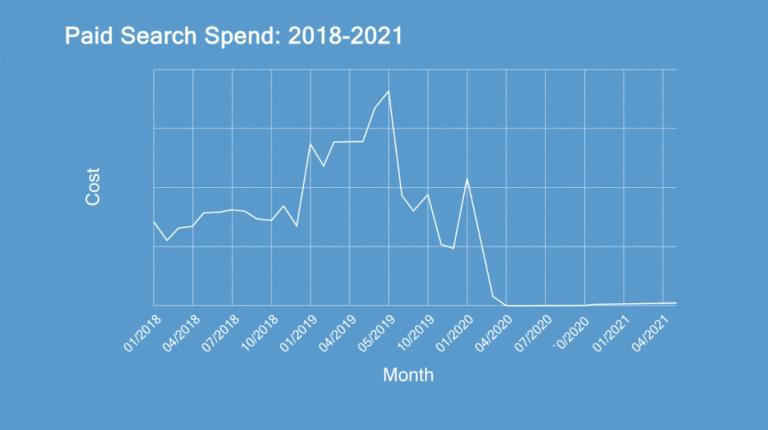
Picture this, it’s peak season 2019, you’re a travel brand organising complex long-stay organised adventures around the globe. You’re spending low 7-figures on Paid Search each month. You’re focused on growth and things are going well.
Then, suddenly, you hear about this new virus. Almost instantly the industry goes to virtually zero.
The impact of the pandemic was prominent across almost every business and sector, none more so than travel.
By partnering with WeDiscover, TourRadar tapped into agile technical Performance Marketing teams that were able to scale up capabilities and team numbers at a rapid rate.
TourRadar offers over 50,000 organised adventures from every corner of the earth with extensive filtering options to find the perfect adventure.
The account inherited by the team at WeDiscover was, understandably, in a very difficult situation due to the lack of travel demand necessitating a substantial decrease in paid search media spend.
Throughout 2020 and 2021, WeDiscover and TourRadar were flexible with budgets in order to try and capitalise on small pockets of demand, with a return to consistently high spend not coming till early 2022.
Agility and flexibility were key in these moments of flexing demand from various parts of the world. But, as we entered 2022 the green shoots of the travel recovery were starting to show and we knew that we had to scale fast and effectively.
From the monthly average in the first 4 months of 2022, we set the target of increasing this 400% within 4 months and increasing more than ten-fold by Q4.
Efficiency was also a very important factor. Whereas in previous years volume and growth were the priority, the aftereffects of the pandemic had shifted the goalposts and meant profitability must be prioritised, with the target of increasing ROAS to double of pre-pandemic levels.
Getting started with efficient growth
Q2 2022 saw a surge in holiday demand across the industry with demand being so high that much of the industry could not cope, exemplified by the well documented struggle of airports and airlines.
But, this demand was something we needed to capitalise on.
The performance targets were set, and demand was high and we needed to kickstart our activity as quickly as possible.
However, there were some considerations we needed to take into account:
- Google’s smart bidding strategies need reliable and predictable historical conversion data to work as intended. Transaction data had been limited and erratic due to lockdowns and travel restrictions.
- The TourRadar tech & data team were in demand. The explosion in travel meant that everyone in the business was busy. We had to be sure of the value add of a project to justify their internal support.
- The account had had minimal changes from early 2020 till mid-late 2021 due to a lack of resources. This meant that aspects such as Expanded Text Ads (ETAs) which were relatively common in 2019 and were the main ad format in the TourRadar account were now outdated and soon to be replaced by RSAs.
The TourRadar account is a global marketplace. Operating from 4 core source markets (US, AU, UK, CA) to almost every destination in the world. Different markets were experiencing different levels of demand, therefore flexibility was key.
Feeds, creative and micro-conversion bidding
TourRadar brings together over 50k organised adventures from 2,500 operators and is able to provide a list of amazing tours for almost any search.
We wanted to utilise this offering by ensuring that we service a user’s search with the most relevant ad copy and landing page.
However, as a global operator, we, therefore, tend to have 10,000s of ads meaning that everything we do needs to be applicable at scale.
Key Projects
We identified 3 core projects we needed to approach in order to scale the account quickly and effectively:
- Creative & Ad Copy
- Coverage
- Bidding
Creative & Copy
We first needed to create a system that allowed us to create new ad copy and manage this at scale. Our existing generic activity was 15k ad groups strong and therefore we needed a solution that automated ad copy creation.
We identified Search Ads 360’s Ad Builder as this solution to build as Ad Builder uses SA360 business data and ad templates to build ads at scale.
The first step in the process was to add structured data, in the form of business data, into our SA360 advertiser. We added details to each campaign and ad group on the travel corridor (Source Market and Destination):
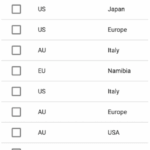
And the main keyword intent:
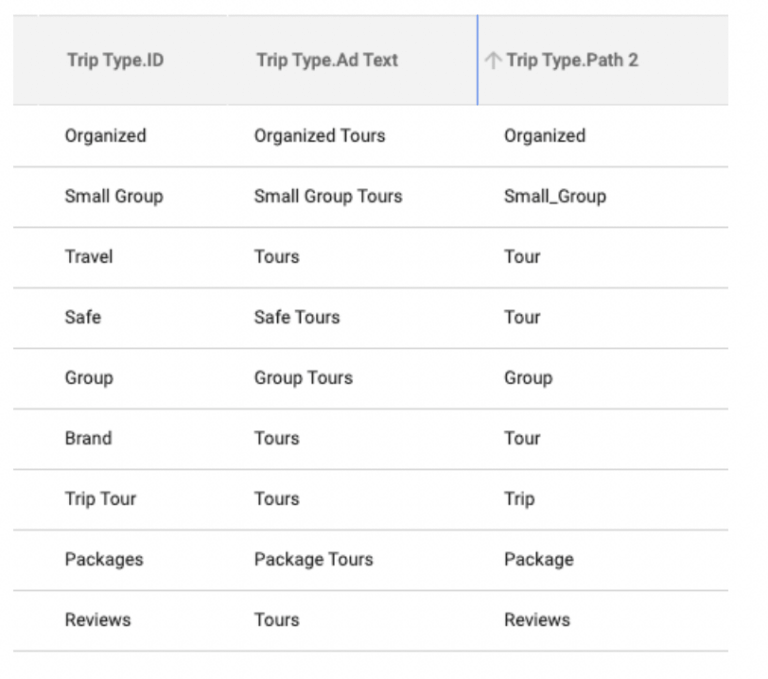
We then use this data to create relevant copy at scale for worldwide destination searches:
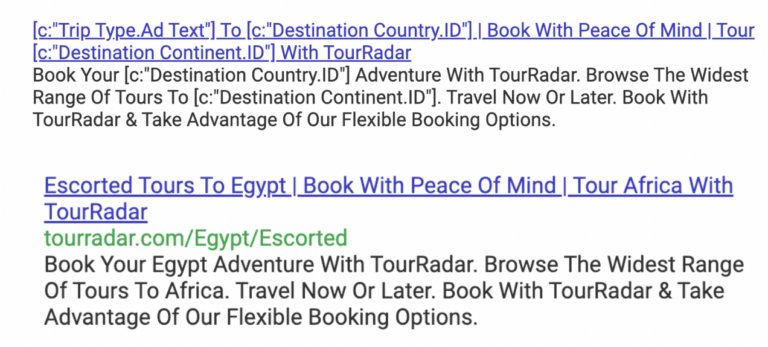
Simply by updating ads to reflect Google’s best practice we saw CTR increase 33% and Avg. CPCs decreased by
12%.
Coverage
The Implementation of ad builder on our existing activity had an immediate impact on performance.
The next step would be to expand our coverage to more specific and detailed queries, improving our relevancy and increasing volume.
For us to do this manually at scale it was an unrealistic and inefficient use of our time.
However, SA360 has another useful feature, Inventory Management, that allows us to build search activity at scale based on a feed.
Using a URL feed provided by TourRadar, we could create highly relevant campaigns, ad groups, ads, and keywords. We could also continue to manage activity based on adventure availability using inventory rules:
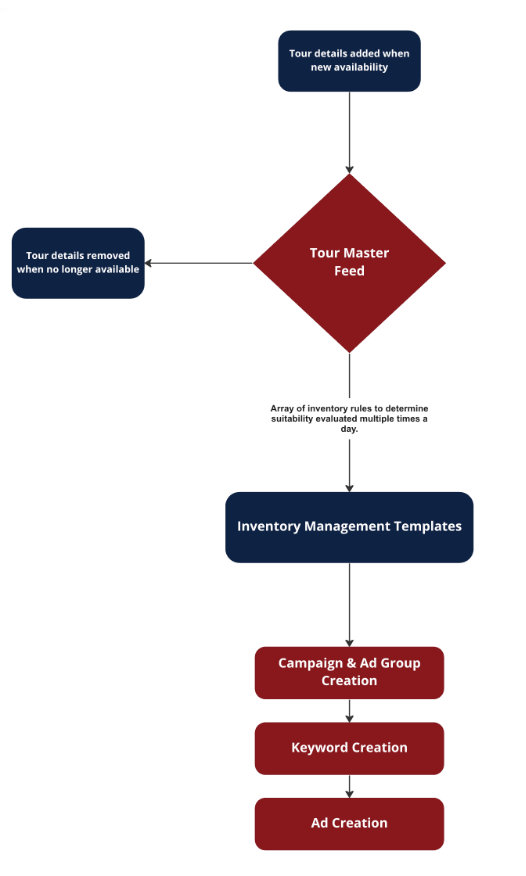
This would require an up-to-date and detailed feed with specific information on adventures including destination, tour type, and segment.
While possible, and something TourRadar had historically done, capacity was stretched within the TourRadar data team and we needed to prove the value in this before briefing in a complex feed update and management.
We, therefore, approached this in a way that runs through much of our work with TourRadar since partnering: test, learn, iterate.
We knew we could create a manual feed for a select amount of destinations and categories and build a bespoke tool within Google Sheets to upload activity at scale.
We could then utilise the same ad builder functionality as we have above to create ads.
This would allow us to prove the concept of feed based coverage before investing time into a feed. It would also allow us to launch quickly, capitalising on the increase in search demand as travel restrictions began to reduce.
Using a combination of Google Sheets formulae and SA360 Bulksheet upload we created 65 campaigns focussing on Destination + Category (e.g. Duration, Budget etc) for destinations we expected to be high volume.
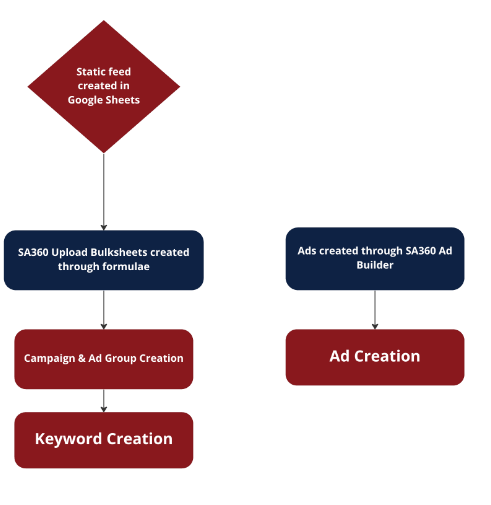
In the first two weeks of launch, we saw these templated campaigns add an additional 23% of conversion volume at a similar CPA to existing activity.
Considering the small scope of this launch, this definitely proved there was a lot of value in feed-based activity and a feed was prioritised and true inventory management activity was launched.
Since this, we have now launched 7k campaigns covering almost all travel styles, destinations, and segments, meaning we have highly relevant coverage for almost all relevant searches.
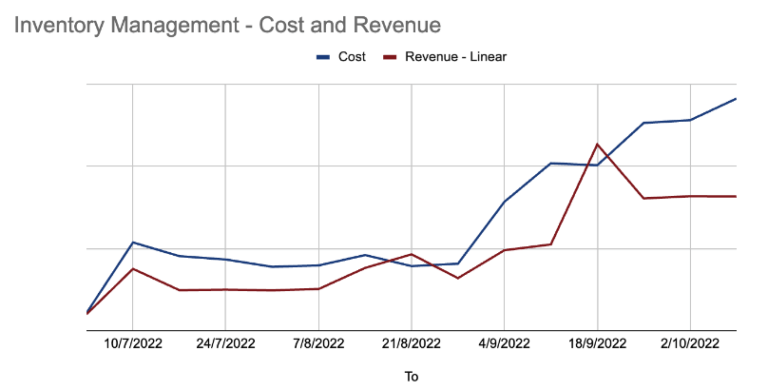
Bidding
Since the pandemic, adventure travel transactions had been understandably low volume and irregular, heavily influenced by new coverage on the ever-changing pandemic.
Google’s bidding algorithms rely on high volume, predictable and reliable conversion data to make the most out of conversion-based bid strategies. This was something we didn’t have in abundance when travel demand suddenly increased. We also knew that the conversion delay period for a service such as TourRadar will likely be weeks if not months.
Throughout the pandemic, manual bidding was used to push spend into constantly changing travel corridors where travel was allowed.
Despite the increase in demand in 2022, transaction volume remained low. This was paired with a lack of recent historical data, a strong mismatch between pixel conversions vs TourRadar’s internal reporting, and a long conversion delay of 30 days – a poor setup for leveraging automated bidding.
We, therefore, explored the possibility of using micro-conversions (onsite events that would be earlier in the purchase process) to signal to bid strategies of users likely to make a conversion.
Using a micro-conversion would have multiple benefits:
- High volume for bid strategy optimisation
- Short conversion lag and therefore more recent data
In conjunction with TourRadar, we reviewed a range of micro-conversions on-site and ran analysis on their correlations with transactions. We settled on a specific conversion that:
- Typically saw high volume
- Had a very strong correlation with transactions
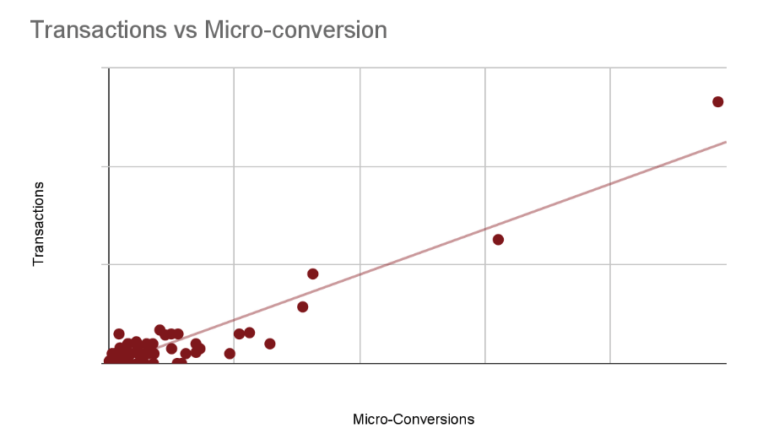
In the first instance, we wanted to test our hypothesis that bidding to a micro-conversion would result in strong revenue returns.
We saw a strong correlation and removing any outliers continued to result in a strong positive correlation.
As with our approach to building new coverage, we tested our bidding hypothesis before iterating and building more complex solutions.
We used an existing conversion pixel and Target CPA bid strategies for the micro-conversion bidding test. Results were initially positive, with transaction revenue (i.e. Macro Conversions) increasing and efficiency remaining stable.
Now that we had confirmation that this approach was likely to work, we wanted to iterate and improve.
An early concern is that a tCPA bid strategy would be likely to move spend towards lower-value transactions due to a higher conversion rate. However, not all adventures bring the same value.
TourRadar allows you to book single-day tours to epic, multi-day once-in-a-lifetime adventures. Naturally, the price of these organised adventures varies greatly, from low double figures to the €10,000s.
We, therefore, worked with the TourRadar team to implement a new conversion pixel to calculate an estimated revenue at the point of micro-conversion using the following calculation:

We now have a value-based bidding solution, allowing us to implement tROAS bid strategies across the account.
The results
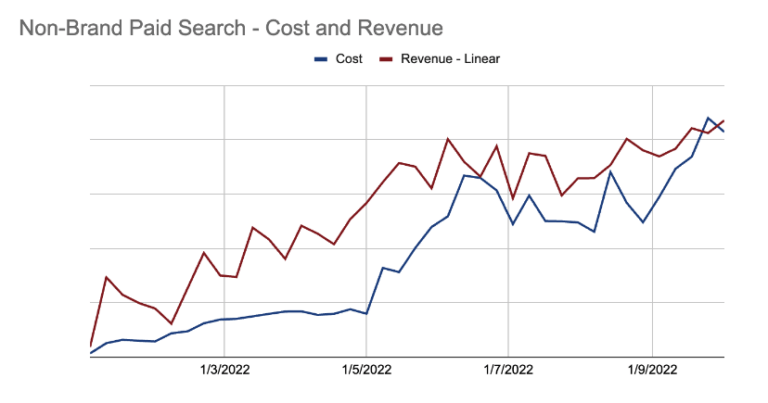
While a sudden return to high media spend across paid channels was expected throughout the travel industry, for TourRadar there has been a big shift toward sustainable growth and efficiency.
Our approach of constant testing and searching for improvement, meant we simultaneously scaled and managed to capture booming demand.
Implementing tests as proof of concepts allowed us to:
- Continue increasing expansion in the short term
- Test ideas on bidding and coverage
- Prioritise tech projects based on accurate impact prediction, to implement more complex solutions
Iterating these processes has allowed us to bid to value-based micro-conversions and scale a feed-driven account to service worldwide travel demand.
Non-Brand paid search spend increased by 1,754% from January to September with revenue increasing by 1,400% in the same period.
Importantly, we have set the foundations for future growth by testing and building complex solutions simultaneously and we look forward to many more innovative solutions with the TourRadar team.

